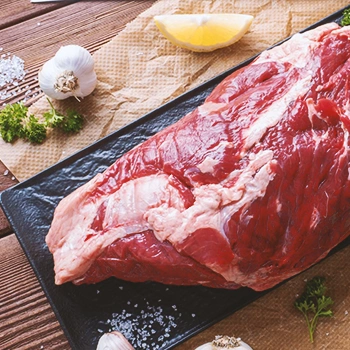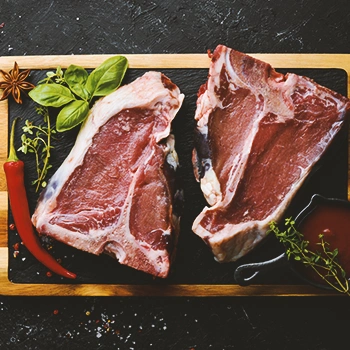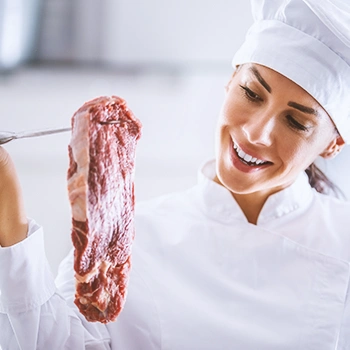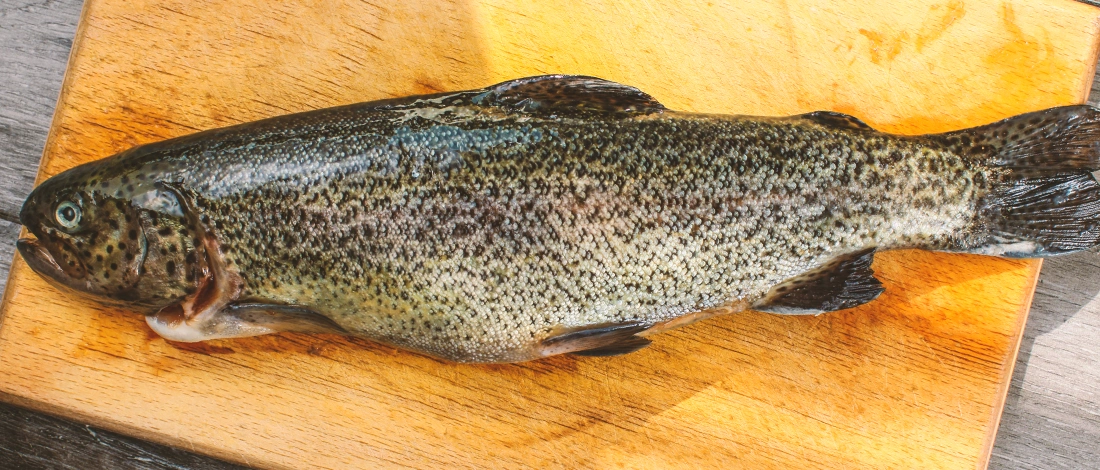As a devout carnivore dieter for almost a decade now, it's safe to say I have eaten my fair share of pork chops, bacon, pork sausages, and pork meat altogether.
Needless to say, I’ve developed a keen taste for quality pork, and I came to realize not all pork is equal.
After days of research, I can say that I have a full grasp of pork grades and how they differ.
Today, I’ll share the differences in quality grades of pork meat, along with some expert tips to help you select the best quality pork.
Quick Summary
- Pork grading differs from other meats, focusing on water holding capacity, color, and marbling.
- Good quality grade pork comes from healthy pork carcasses with high water holding capacity and good color and marbling scores.
- When buying fresh pork, it's essential to look at the color and read the label for a better description of the product.
- If you're struggling to find a good source for quality and natural meat grades, check out these reliable and authentic meat delivery boxes.
Grade Levels Of Pork

Pork meat is not categorized like standard USDA beef quality grades. It only has two grading levels.
1. Acceptable Grade
Acceptable quality pork grade is the only selection of fresh pork sold in your local grocery store or the butchery. Cuts in this grade are distinguished by a higher proportion of lean meat to fat content and bone mass [1].
The most common cuts in this grade include:
- Pork Tenderloin: This usable lean meat cut sourced from the end of the loin is distinguished by its pale pinkish color, refined grains, and tapered end.
- Pork Chops: This popular cut is perfect for grilling and comes from the center of the loin. This cut comes in two pork quality varieties: loin chops and rib chops.
- Pork Loin: This lean meat cut is harvested from the back end of a pig. Because there are no bones in this cut, it is effortless to slice. This cut has good pork loin chops scoring of color and fat thickness as per the national pork board [2].
- Pork Sausage: Pork sausages are made from ground pork, with different flavors ranging from spicy to sweet.
2. Utility Grade

The utility grade refers to pork meat that is primarily used in various processed products.
This grade is not available for sale directly to the general public. Utility grade includes all the valuable by-products of pork that are used in various industries to create other beneficial products.
According to the National Pork Producers Council, the rate of return of edible pork by-products may be around 6.7 percent of the weight of the pig carcass.
Hides, skin, bones, blood, and other internal organs, including the intestines, are the most crucial pork by-products. This quality pork product, when processed, produces approximately 10 million tons of high-quality fats and proteins [3].
These by-products enhance the pork supply chain project in their various applications, including food, feed, and pet food, as well as medicinal and pharmaceutical commodities.
Pork by-products are now used in a variety of industries for their various benefits. They are used to manufacture fertilizers in the agricultural sector and gelling materials in the beauty and cosmetics sector.
The biotechnology sector uses blood-derived reagents to carry out their diagnostics [4].
Difference Between Acceptable and Utility Pork Grade

While acceptable quality pork and utility grade come from the same animal, there are some key differences between the two.
- Acceptance grade is directly accessible to consumers in the market, while utility pork grade is not.
- Acceptable grade includes only major muscle cuts of the animal like shoulders, loin, and back, while utility pork comprises all the other parts like blood, hides, and skin.
- Acceptable grade products are mainly edible, while utility pork is used for inedible products.
4 Characteristics Of Good Pork Meat
Here are four main qualities that characterize good pork meat quality grades.
1. Muscle Color

When it comes to muscle color, the color of quality grade pork can be characterized as red (R), pale (P), or dark (D).
Most users prefer reddish-pink (R) colored pork over pale (P) colored pork. Pale-colored pork is more likely to deteriorate into gray or green during more extended storage, making it less desirable to customers.
Fresh quality grade pork color is extremely dynamic because the protein in meat remains active and usable even after the animal has been slaughtered.
Myoglobin, the protein liable for meat color, is an aspect of what drives the muscle fibers and stores oxygen when it is alive [5].
Because myoglobin does not mingle with oxygen when pork is pristinely cut, it is a purplish-pink color. After being cut, the oxygen in the air binds to the myoglobin, causing the pork to transform into the bright pink color we attribute to fresh pork.
The catalysts in the muscle consume oxygen and remove it from the myoglobin. This reduces oxygen levels in the muscle, causing myoglobin to oxidize and turn brown.
The oxidation is accelerated when:
- The meat is poorly stored for longer
- Pork is frozen under extremely low temperature
- Seasoned with extra salty marinades
2. Marbling
Marbling is the fat white specks that you see on meat.
According to research into consumer perspectives and eating choices for acceptable quality pork, a higher level of marbling range is linked with good eating quality.
The study also found that buyers rated high marbled pork as having higher juiciness, tenderness, and flavor scores than low marbled pork [6].
According to the Korean pork carcass grading system based on marbling level, premium quality grade pork labeled "grade 1+" has the best marbling degree.
Followed by "grade 1" pork with a fine marbling degree and lastly, "grade 2" pork meat with a poor marbling degree [7].
Always look for top pork quality grades with good marbling, which, when grilled, leaves you with a crusty surface that’s juicy inside.
3. Water Holding Abilities
The water-holding ability of pork refers to the capacity of the meat to retain or hold moisture under any pressure; heating, slicing, and grinding.
Good quality pork has a high water holding capacity (WHC) because the protein fibers are intact and closely knit together [8].
Old pork or meat harvested from an aged animal has less WHC because the muscle fibers of such an animal have undergone excess proteolysis (the process of converting muscle to chewable meat) [9].
4. Ultimate pH

Only fresh pork with a very strong ultimate pH (greater than 6.2) has a dark color and would seem relatively dry on the surface.
This dark, firm, and dry pork has an extremely high water-holding capacity [10]. The meat is also very firm textured, making visual distinctions between strands of muscle tissue difficult.
This meat is produced from pork carcasses that have been subjected to lengthy pre-harvest frustration and are chopped down before it has had a chance to rest and regenerate their stores.
Prolonged stress causes glycogen depletion in the muscle. Because glycogen compounds are responsible for producing lactate in the muscle tissues, if it's less at the time of harvest, it'll be much less after the animal is slaughtered.
This results in a much lower pH value, particularly for the postmortem muscle [11].
4 Tips For Buying Quality Pork Meat
Buying fresh pork sold in different stores can be a little daunting. So the next time you go grocery shopping, here are four key things you can consider when buying pork.
1. Examine The Color

The color of pork meat says a lot about its quality and freshness. Always look for only fresh pork with bright red color as this indicates it's fresh and was cut from a healthy animal.
Avoid pork cuts that have a dark or purplish tint, as they're either from old pork carcasses, or they're about to expire.
If you notice patches of discoloration on the fresh pork sold at the store, it would be best not to buy it because it might have been mishandled during processing, thus affecting the pork quality.
Also Read: Ground Beef Turning Gray
2. Check The Firmness
Fresh pork meat should be neither too soft nor too harsh, and you can examine this by poking it. Based on pork carcass grades, good grades of pork meat should press in slightly and bounce back to its original shape almost immediately.
If you try this and the meat doesn't press or snap back, chances are it has overstayed on the shelf, and it's not fresh.
3. Use Your Eyes
Looking at the pork meat well will give you more information that's missing on the label.
If you want a lean cut, buy one that's well-trimmed around the edges to slim the fat thickness.
But be mindful of marbling, as you would like to get one with a good fat fleck here and there for extra tenderness.
Choose pinkish reddish pork cut that's fine-grained. Also, note that the fat coloring should be creamy white, so if you notice any yellowish or dark fat color, it could indicate that the piece is old or probably rotten.
4. Pay Attention To The Label

Perusing the label will reveal a lot about the cut, including the primal cut from which it was derived, the meat description, back fat thickness, the packaging and expiration dates, and nutritional information.
If you are familiar with the various pork cuts, the name labeled there will assist you in determining if it is of the preferred leanness and tenderness.
For example, the shoulder is made up of cuts with a lot of fat, which adds flavor and tenderness. Cooking methods for these cuts include stewing, roasting, broiling, or grilling to ensure you’re eating quality meals.
Reading the label also helps you know if meat is boneless or not so that you know how much to buy. Typically boneless meat gives more servings than bone-in pork.
“Always look to labels for clues about the beef quality grades and the animal. Whether it has been given antibiotics, whether it's pasture-raised or grass-fed.”
- Brian Butler, Expert Butcher
Related Articles:
FAQs
What Grades Of Pork Are Sold In Stores?
Acceptable grades (only fresh pork) are sold in stores.
Why Is Pork Not Graded Like Beef?
Pork is not graded like beef because pork carcass is not ribbed like cow carcass; hence it can be difficult to measure back fat thickness.
How Can You Tell The Quality Of Pork?
You can tell the quality of pork by looking at the standard and commercial grade parameters like color, marbling, and firmness of the meat.
How Can You Tell Which Pork Is The Highest Quality?
You can tell which pork is the highest quality by checking if it has a bright red color, trimmed excess fats, and is well-firm.
References:
- https://ask.usda.gov/s/article/Is-pork-graded%
- https://www.pork.org/
- https://ageconsearch.umn.edu/record/265983/files/foodAgMktgCons-041.pdf&ved=
- https://onlinelibrary.wiley.com/doi/abs/10.1002/9781119383956.ch2#
- https://www.researchgate.net/publication/30072640_
- https://www.ncbi.nlm.nih.gov/pmc/articles/PMC8304759/
- https://www.ncbi.nlm.nih.gov/pmc/articles/PMC6722317/
- https://www.sciencedirect.com/topics/food-science/water-holding-capacity
- https://onlinelibrary.wiley.com/doi/pdf/10.1111/j.1365-2621.1966.tb00467.x%23:~:text%
- https://porkgateway.org/resource/water-holding-capacity-of-fresh-meat/
- https://www.ncbi.nlm.nih.gov/pmc/articles/PMC4973946/







